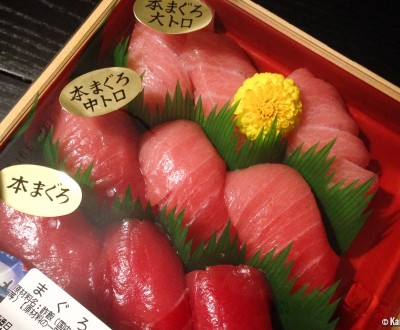How safe is it to eat Sushi (raw fish) while pregnant
Sushi 🍣 eating for pregnant women regularly raises debates. They indeed raise questions about the ability to ingest raw fish during pregnancy and breastfeeding.
We receive recurring requests for such information and advice on this issue. This article will try to understand if eating sushi (nigiri, maki, sashimi and chirashi) remains a possibility when expecting or when nourishing a baby with breast milk, and how it can be secured.
Official positions and contraindications
In the United States, the officials recommend avoiding sushi to protect oneself against listeriosis. Same advice in Quebec and France, for example.
However, the UK does not share this precaution and says:
It's usually safe to eat sushi and other dishes made with raw fish when you're pregnant.
The reason for this statement is to be sought in strict health standards in England: raw fish must be frozen first. However, we should not stop at that first sentence as specific characteristics are numerous: limited quantities on tuna and fatty fish, shellfish and seafood avoidance even though previously frozen, and so on.
Sometimes doctors of all nationalities, and even associations question the contraindications related to raw fish. According to them, freezing as well as smoking or pickling kill harmful bacteria and parasites to the pregnant woman and the fetus. That would be, of course, only valid for restaurants of impeccable hygiene. Anyway, the international medical community has no firm and determined opinion on the issue.
Note, moreover, that Japanese women do not specifically raise the issue and continue to eat sushi throughout their pregnancy.
Solutions to circumvent risks
For pregnant women who do not want to take risks with raw fish, there are alternatives. For each type, we added the writing and pronunciation in Japanese, if necessary in the context of a stay in Japan.
First, it may be forgotten sometimes but vegetarian sushis do exist:
- avocado (アボカド avocado) or cucumber (河童 kappa) especially in maki, but vegetables should be washed well before;
- omelet (卵 tamago) especially in nigiri-zushi.
Also, some sushis are made with baked, boiled or grilled products. This is the case of eel (鰻 unagi) and also, generally, for shrimp (えび ebi), crab (蟹 kani), scallop (帆立 hotate) or salmon (焼きサーモン yaki-saamon). Prepared at home, they can only be limited by your creativity. No offense to the purists, but some creations can help for those nine months, for example with carrots and cheese.
For those of you who, after all, can not do without raw fish in their sushi during pregnancy, the least risky approach for listeria not to develop seems to be:
- Go to a reputable fishmonger to buy fresh fish. Avoid Mondays because there is usually no fishing on Sundays. Ask for a piece from the cold room and not one of those on the stalls. Of course, choose a wild fish, not farmed.
- Do not break the cold chain ; ideally place the fresh fish in a cool bag with ice packs. Get home without wasting time or doing other errands.
- Place the fish in the freezer to stop the growth of bacteria: the usual advice is -35°C for 15 hours or -20°C for 48 straight hours minimum.
- A few hours before the meal, thaw frozen fish in the refrigerator (not in open air).
- Perform cutting and preparation just before serving.
Just to make sure, we must note that freezing does not destroy listeria but would significantly reduce the risk of contamination. Of course, the pregnant woman is the only one to take the decision or not and thus who assumes responsibility in the case, unfortunately, of a future complication. It is therefore necessary to respect their choice, whatever it may be.

